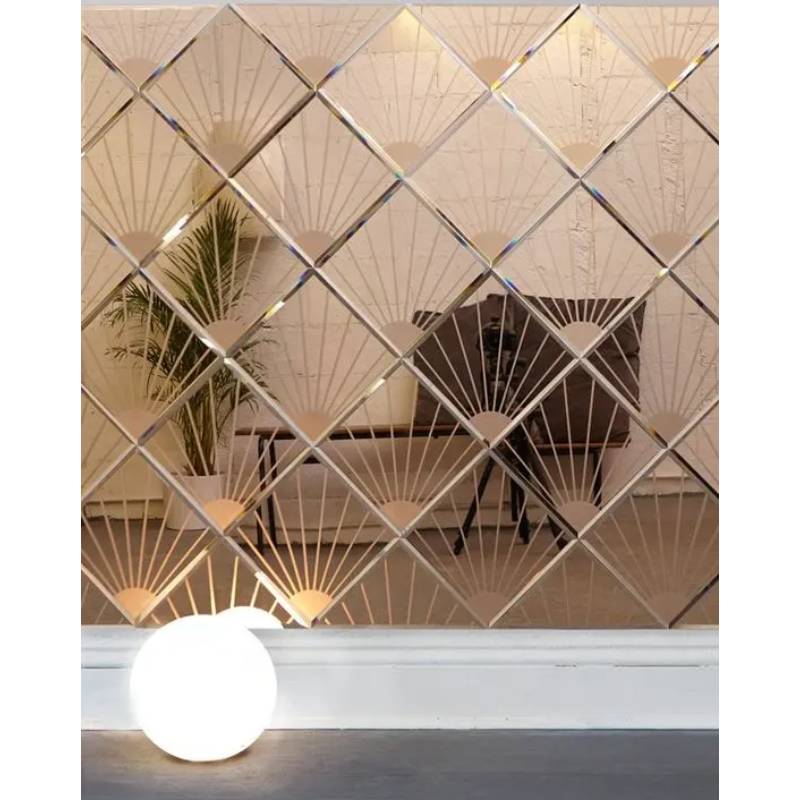The Aluminum Mirror Coating Process An Overview
Aluminum mirror coating is a critical process used in the production of high-quality reflective surfaces for various applications, ranging from astronomy to everyday consumer products. The procedure involves several steps that ensure the final product possesses superior reflective qualities while maintaining durability. This article outlines the key components and considerations involved in the aluminum mirror coating process.
1. Substrate Preparation
The first step in the aluminum mirror coating process is substrate preparation. Common substrates include glass, plastics, or metals, depending on the intended application. The chosen material must undergo thorough cleaning to remove any contaminants such as dust, oils, or fingerprints that could interfere with the bonding of the aluminum layer. Standard cleaning methods involve ultrasonic baths, rinsing with deionized water, and using solvents like isopropyl alcohol.
Once cleaned, the substrate may also be treated to enhance adhesion. This can involve etching the surface or applying a primer that bonds well with both the substrate and the aluminum layer.
2. Vacuum Deposition Techniques
The core of the aluminum mirror coating process is the deposition of aluminum onto the prepared substrate. This is typically done using vacuum deposition techniques, which can include Physical Vapor Deposition (PVD) or Chemical Vapor Deposition (CVD).
Physical Vapor Deposition (PVD) is a widely used method that involves heating aluminum until it vaporizes in a vacuum chamber. The vaporized aluminum then condenses onto the cooler substrate, forming a thin, uniform layer. PVD allows for precise control over the thickness of the aluminum layer, which is crucial for optimizing reflectivity.
Chemical Vapor Deposition (CVD), on the other hand, uses chemical reactions to deposit aluminum compounds, which then convert to aluminum upon reaching the substrate. This method can yield coatings with high uniformity and adhesion strength.
3. Thickness Control
aluminum mirror coating process
One of the critical parameters during the aluminum coating process is the thickness of the aluminum layer. Optimal thickness typically ranges between 100 and 300 nanometers, as this range balances reflectivity with durability. Thicker layers can reflect more light but may also lead to increased stress on the substrate and potential cracking or peeling.
Monitoring techniques, like quartz crystal microbalances or optical reflectance measurement, are used to achieve precise control over the thickness during deposition.
4. Post-Coating Treatments
After the aluminum has been deposited, post-coating treatments are often necessary to enhance the performance of the mirrors. These treatments can include the application of protective coatings that improve scratch resistance, weather resistance, and overall durability. Common protective coatings include silicon dioxide (SiO2) or magnesium fluoride (MgF2), both of which also serve to improve optical performance by minimizing reflection losses.
5. Quality Control and Testing
Quality control is a critical component of the aluminum mirror coating process. Finished mirrors undergo rigorous testing to ensure they meet required specifications. Key characteristics evaluated include reflectivity, durability, and adherence of the coating. Techniques such as spectrophotometry are employed to measure reflectivity across various wavelengths, while mechanical tests assess the strength of the bond between the aluminum layer and the substrate.
6. Applications
Aluminum-coated mirrors have a wide range of applications. In astronomy, they are used in telescopes to enhance light collection from distant celestial bodies. In solar energy applications, aluminum mirrors are essential for concentrating sunlight to optimize energy production. Other applications include lighting fixtures, car headlights, and decorative items.
Conclusion
The aluminum mirror coating process is a sophisticated blend of science and engineering that establishes the foundation for numerous optical technologies. Through careful substrate preparation, controlled deposition methods, and rigorous quality control, manufacturers can produce highly reflective, durable mirrors that meet the diverse needs of various industries. As technology advances, the processes involved in aluminum coating will likely undergo further refinement, paving the way for even more innovative applications in the future.
 Afrikaans
Afrikaans  Albanian
Albanian  Amharic
Amharic  Arabic
Arabic  Armenian
Armenian  Azerbaijani
Azerbaijani  Basque
Basque  Belarusian
Belarusian  Bengali
Bengali  Bosnian
Bosnian  Bulgarian
Bulgarian  Catalan
Catalan  Cebuano
Cebuano  Corsican
Corsican  Croatian
Croatian  Czech
Czech  Danish
Danish  Dutch
Dutch  English
English  Esperanto
Esperanto  Estonian
Estonian  Finnish
Finnish  French
French  Frisian
Frisian  Galician
Galician  Georgian
Georgian  German
German  Greek
Greek  Gujarati
Gujarati  Haitian Creole
Haitian Creole  hausa
hausa  hawaiian
hawaiian  Hebrew
Hebrew  Hindi
Hindi  Miao
Miao  Hungarian
Hungarian  Icelandic
Icelandic  igbo
igbo  Indonesian
Indonesian  irish
irish  Italian
Italian  Japanese
Japanese  Javanese
Javanese  Kannada
Kannada  kazakh
kazakh  Khmer
Khmer  Rwandese
Rwandese  Korean
Korean  Kurdish
Kurdish  Kyrgyz
Kyrgyz  Lao
Lao  Latin
Latin  Latvian
Latvian  Lithuanian
Lithuanian  Luxembourgish
Luxembourgish  Macedonian
Macedonian  Malgashi
Malgashi  Malay
Malay  Malayalam
Malayalam  Maltese
Maltese  Maori
Maori  Marathi
Marathi  Mongolian
Mongolian  Myanmar
Myanmar  Nepali
Nepali  Norwegian
Norwegian  Norwegian
Norwegian  Occitan
Occitan  Pashto
Pashto  Persian
Persian  Polish
Polish  Portuguese
Portuguese  Punjabi
Punjabi  Romanian
Romanian  Russian
Russian  Samoan
Samoan  Scottish Gaelic
Scottish Gaelic  Serbian
Serbian  Sesotho
Sesotho  Shona
Shona  Sindhi
Sindhi  Sinhala
Sinhala  Slovak
Slovak  Slovenian
Slovenian  Somali
Somali  Spanish
Spanish  Sundanese
Sundanese  Swahili
Swahili  Swedish
Swedish  Tagalog
Tagalog  Tajik
Tajik  Tamil
Tamil  Tatar
Tatar  Telugu
Telugu  Thai
Thai  Turkish
Turkish  Turkmen
Turkmen  Ukrainian
Ukrainian  Urdu
Urdu  Uighur
Uighur  Uzbek
Uzbek  Vietnamese
Vietnamese  Welsh
Welsh  Bantu
Bantu  Yiddish
Yiddish  Yoruba
Yoruba  Zulu
Zulu 

